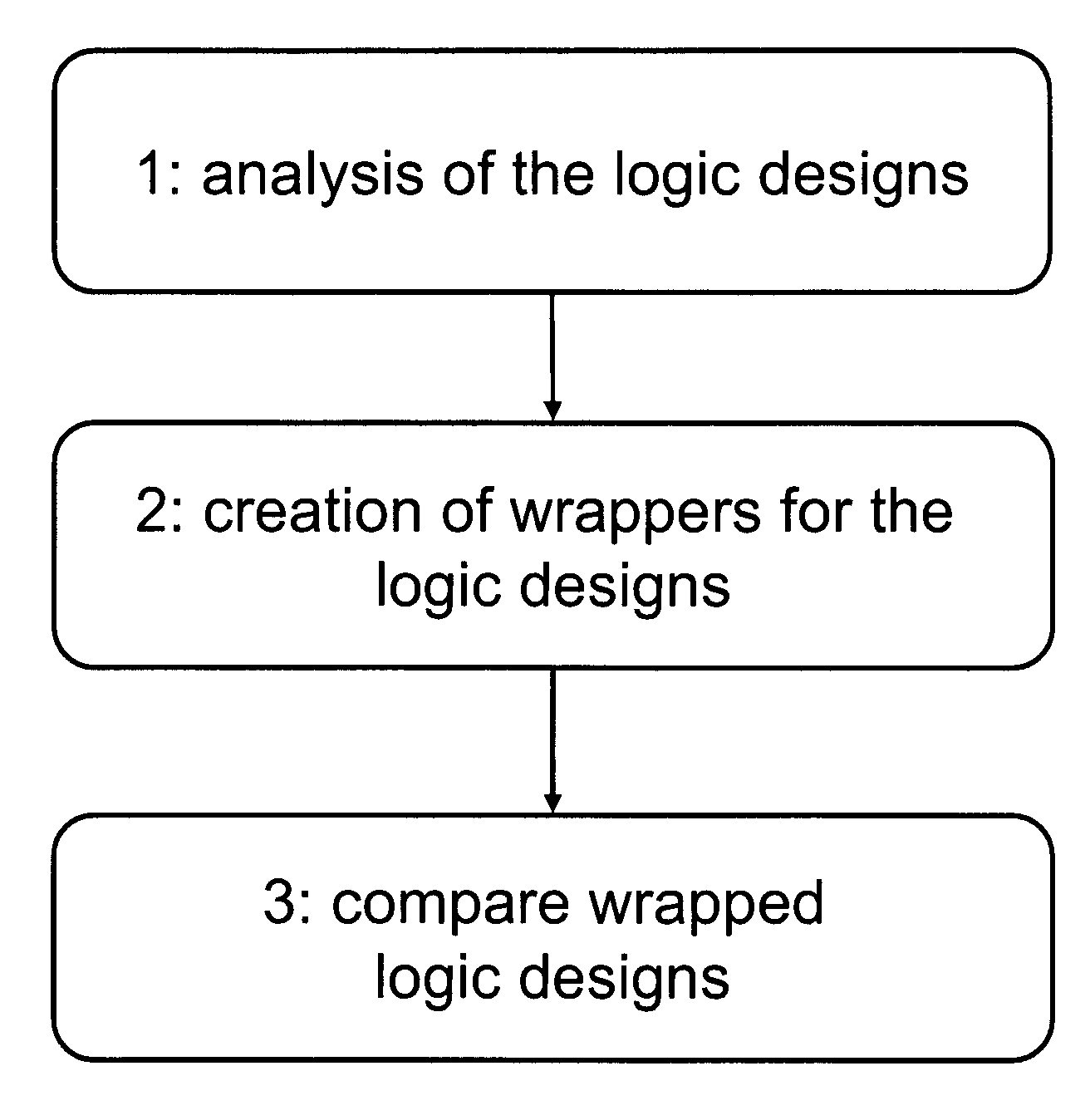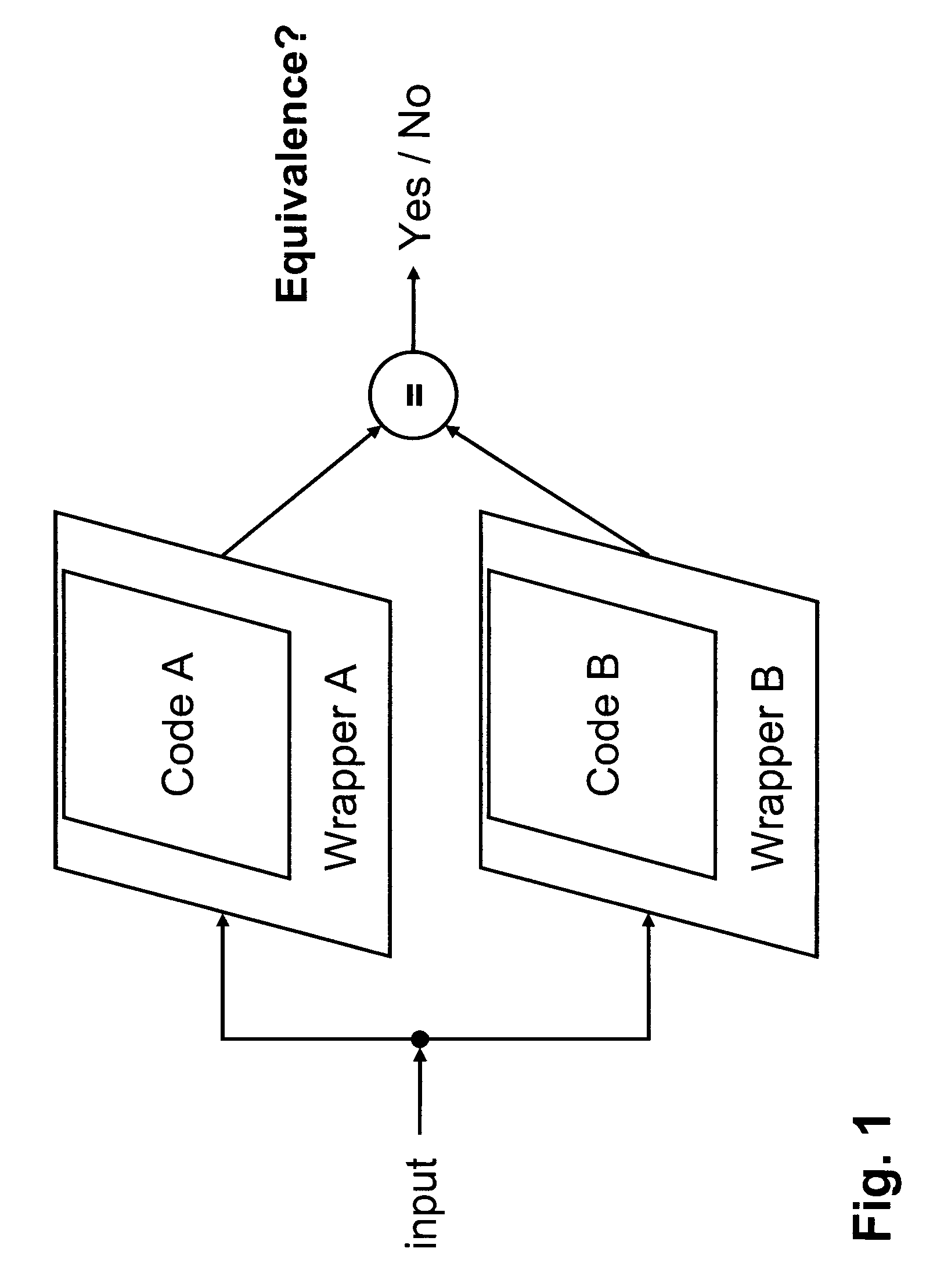Method and system for verifying the equivalence of digital circuits
a digital circuit and equivalence technology, applied in the field of methods and systems for verifying the equivalence of digital circuit designs, can solve the problems that the enormous space of input signal values and internal states cannot be totally verified by logic simulation, and the ffv of the dut at the register-transfer level is inherently difficult to achieve when using automated methods
- Summary
- Abstract
- Description
- Claims
- Application Information
AI Technical Summary
Benefits of technology
Problems solved by technology
Method used
Image
Examples
Embodiment Construction
[0041]Referring to FIG. 1, there is shown is a block diagram of two designs represented by two HDL logic implementations (Code A and Code B) that serve as inputs to the system of the present invention, and which are to be compared for equivalence for a given input set.
[0042]Referring to FIG. 2, there is shown a flow chart describing a preferred embodiment of the present invention. In step 1, two designs in need to be compared are analysed. This step is referred to as the analysis step. In step 2, a wrapper is constructed for each design based on the analysis results encapsulating the design. This step is referred to as the wrapper creation step. In step 3, the resulting two modified designs are compared for sequential equivalence. This step is referred to as the verification step. The verification step uses existing verification methods and tools known in the art. Their use is enabled by special wrappers created during the wrapper creation step.
[0043]The analysis and wrapper creatio...
PUM
 Login to View More
Login to View More Abstract
Description
Claims
Application Information
 Login to View More
Login to View More - R&D
- Intellectual Property
- Life Sciences
- Materials
- Tech Scout
- Unparalleled Data Quality
- Higher Quality Content
- 60% Fewer Hallucinations
Browse by: Latest US Patents, China's latest patents, Technical Efficacy Thesaurus, Application Domain, Technology Topic, Popular Technical Reports.
© 2025 PatSnap. All rights reserved.Legal|Privacy policy|Modern Slavery Act Transparency Statement|Sitemap|About US| Contact US: help@patsnap.com



